The gorgeous painting ( cover image ) was done by the artist, Dr. Sanjeev Handique as a little boy in 1979 of a bungalow in Digboi. Both he and Kashmiri Nath, who has contributed the article and photographs grew up in this quaint charming old town in Tinsukia district of Assam.
When Assamese Cuisine is mentioned it usually represents the native and indigenous food overlooking the Planter’s Cuisine. Interwoven into the wide tapestry of culinary legacy, is a cuisine which was brought to Assam, by the British Tea Planters some 200 years back. In 1826, Robert Bruce discovered Tea ( Camellia Assamica )in the region through the Singhpo tribe headman in Upper Assam. The Singpho tribe were already well aware of the properties and benefits of this native plant. They were consuming it way before the British were made aware of it in China. They still continue to produce the tea in the traditional manner, smoking, drying, and preserving it in bamboo hollows and producing tea coins.
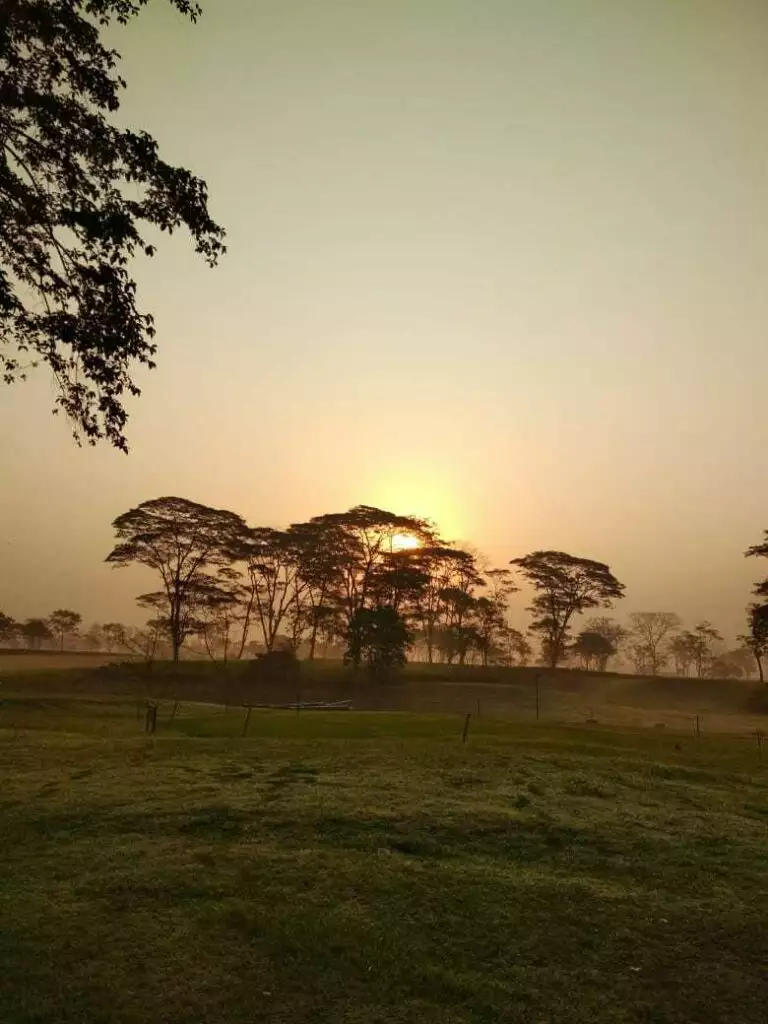
The British set up the first Tea Estate in 1830 in Chabua, and Assam became the largest producer of tea in the world. The first batch of tea – 350lbs of tea, which was hand rolled and dried over slow fire, packed in chests- travelled over the Brahmaputra to Kolkata and finally arrived in London through ship to be auctioned at a princely amount of 35 Shilling! Oil, timber and coal were other natural resources discovered in the region.The oldest oil refinery still functioning outside of America is in Digboi nestled in Upper Assam, surrounded by the tea estates and forests.
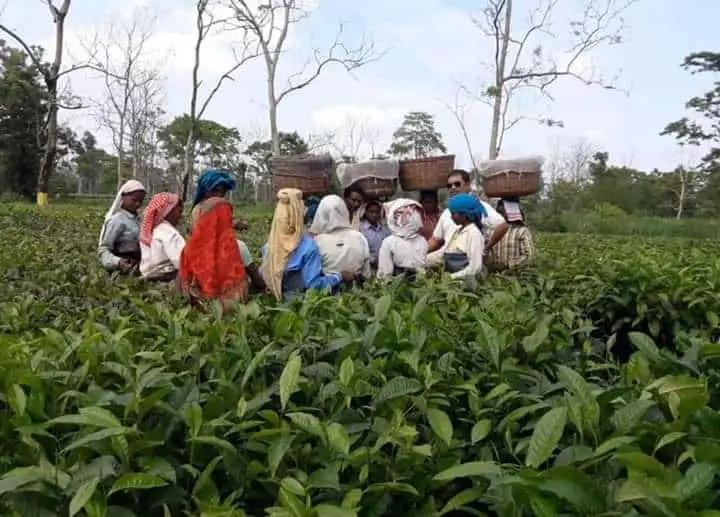
Assam was transformed – it developed a new industry that gave rise to a flourishing socio economic growth, it witnessed the arrival of British planters from England and Scotland, and labourers from Bihar, Jharkhand, and Orissa. This led to a confluence of culture, food and habits that evolved into the new Assam.
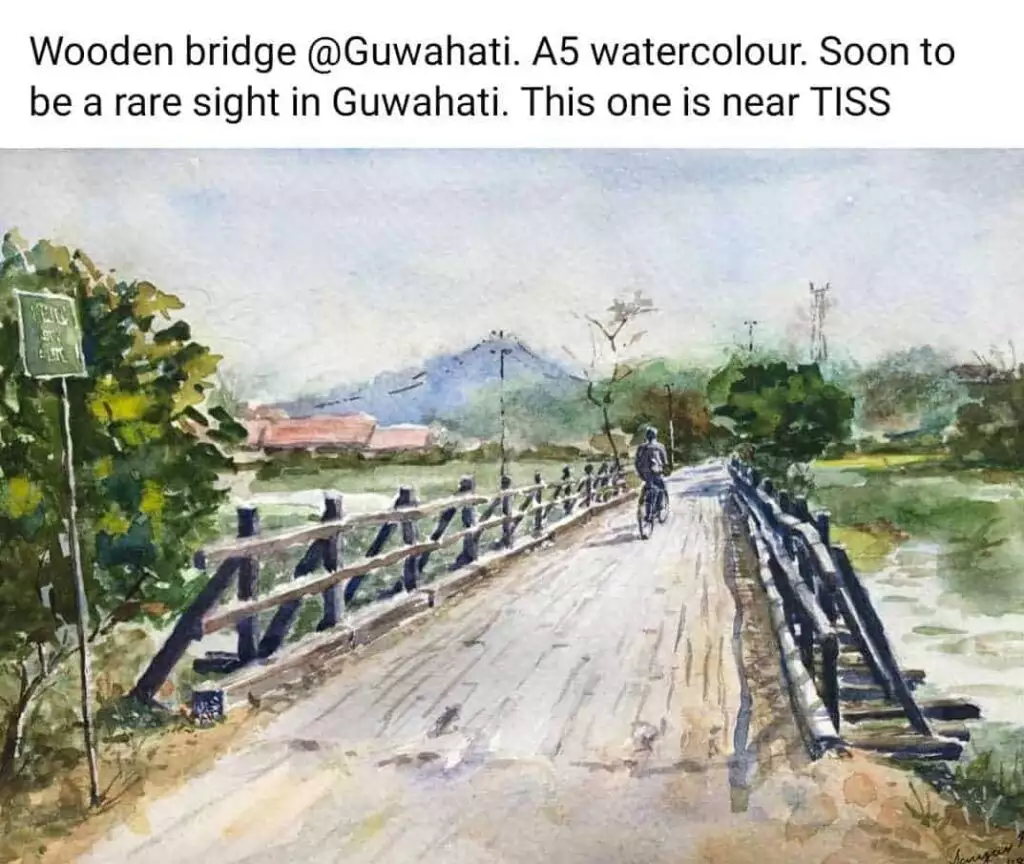

Food played a pivotal role in the life of a Planter’s lifestyle. When the British set up the plantations and refineries in India, their social lives revolved around the clubs. The social lives of the planters and Officers of the Oil town was intertwined, they would regularly play sports like golf and tennis together, organizing sports events, followed by social evenings and obviously food again played a major role here.
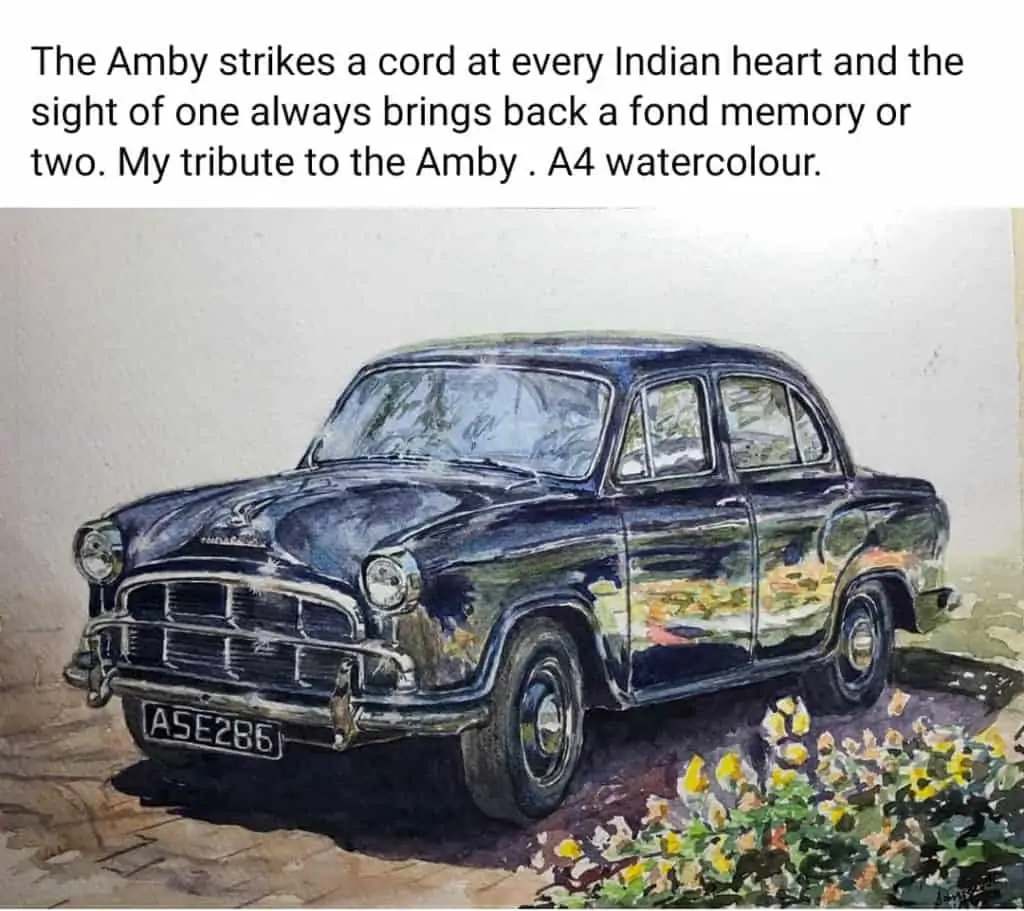
The bungalows designed during this time were comfortable and large, built mostly on silts, with high ceilings to keep the houses cool in the hot and humid climate. The houses were set with beautiful flower and vegetable gardens. The lifestyle was lavish with a retinue of household staff from cooks, to bearers, and gardeners. Work was tough and long, both physically and mentally demanding. There were certain ‘dastoors’, unwritten rules and conventions that guided the life in the tea plantations. Most gardens had to be self-sufficient in their day to day living.
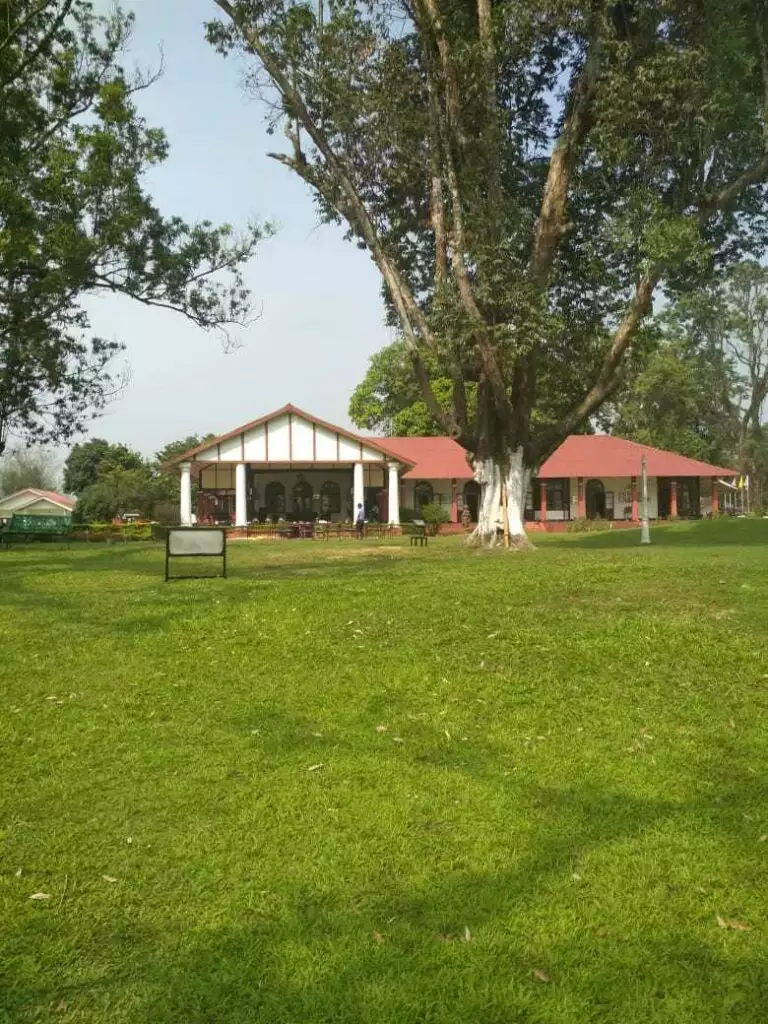
The kitchens were located a little away from the main house and connected with a covered passage. There was a pantry attached to the dining room for the convenience of the bearer to serve the food. Meals in the garden were almost ritualistic and served on set times, with tables laid properly with serviettes and flatware.
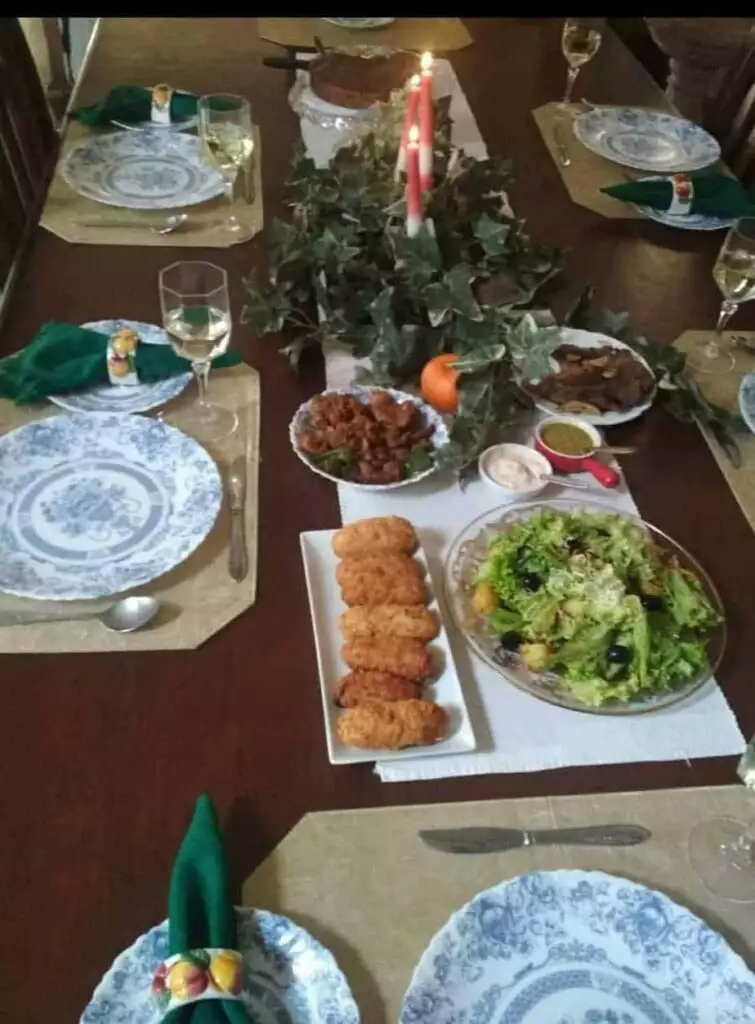
The British wives trained the local cooks and adapted their traditional dishes to suit the availability of local products, the legacy continued much after they left the plantations. Breakfast being the biggest meal, a traditional English breakfast, comprising of toasts, eggs, baked beans, cold cuts, and fruits. Bread was baked at home and I remember waking up to aroma of freshly baked breads every morning. Seasonal fruits and berries were turned into preserves and jams and nothing was wasted. The cooks, were experts at turning out the lightest of soufflés by hand whipping the egg whites. They baked the best cakes, without the aid of any fancy kitchen equipment, decorating them with buttercream and royal icing for birthdays and special occasions.
The most sought after chefs, were the Mog Cooks. They were inherently exceptional cooks of Burmese descent who were able to understand the European recipes and adapt them with a touch of their own. The Mog Cooks and the British ladies, together, had produced a unique cuisine, stamping their mark in the culinary history. It is interesting to see how ingredients were compromised due to lack of availability yet an equally delicious dish was created. For example, the soufflé recipe they created does not have any whipped cream yet it is an outstanding dessert. Unfortunately, they departed along with the British from the plantations and very little of the British Raj food culture exists today.
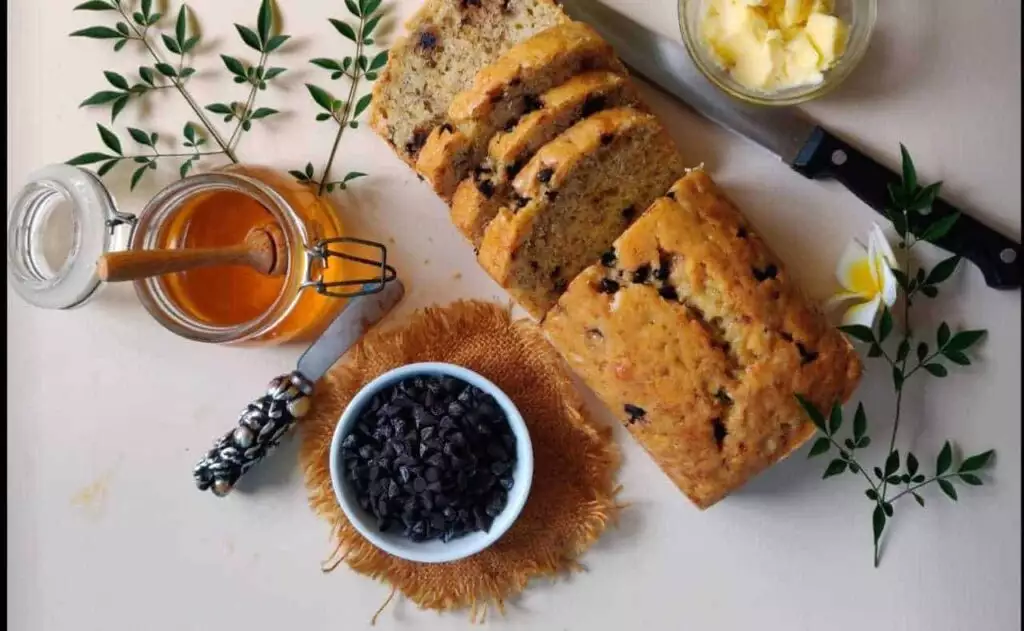
The tea trolley being wheeled into the ‘ Jali Kamra’, deep covered veranda, with crisp tea napkins and tea in tea pots with tea-cozies. Cakes, éclairs, sandwiches, puffs, pies, and of course fresh tea was savoured. Club gatherings would be followed by an elaborate spread of cakes, treats and savouries which included cutlets, and chops served with the creamiest of house-made egg mayonnaise. Dinners in turn would be hosted once a month in the clubs and by the ladies in their bungalows. The buffet spread would always be to outshine one another in a friendly camaraderie manner. Planter’s goulash, roast chicken, pork roast were staples on the menu. Swiss rolls jam roly-poly, creamy caramel custards, would vie for attention on the dessert table. Cold chicken salad for hot summer days, wobbly jellies, meringues, trifles puddings, bread and butter puddings, perfectly cut delicate sandwiches, crisp potato fries, the beloved Shepherd’s Pie, and flaky vol –au – vents made with suet, it’s a wonder how they adapted classic traditional dishes so far from home with scant ingredients.

We would also enjoy Indian food, but everything was served with a twist of panache. The ‘dals’ would appear in sauce boats on the table, along with the ‘pulaos’ and salads.
Christmas celebrations in the clubs were extravagant affairs with, elaborate menus and grand table décor. Jam tarts, Yule logs, mince pies and with Hog Roast and rum cakes would feature on the table. It is a pity that along with the British and the disappearance of the Mog Cooks this cuisine too has almost disappeared from the tea estates and the tea clubs. Yet, it has in many ways brought change in the eating habits of a few generations in this region who grew up in this era and assimilated it into mainstream Assamese cuisine.
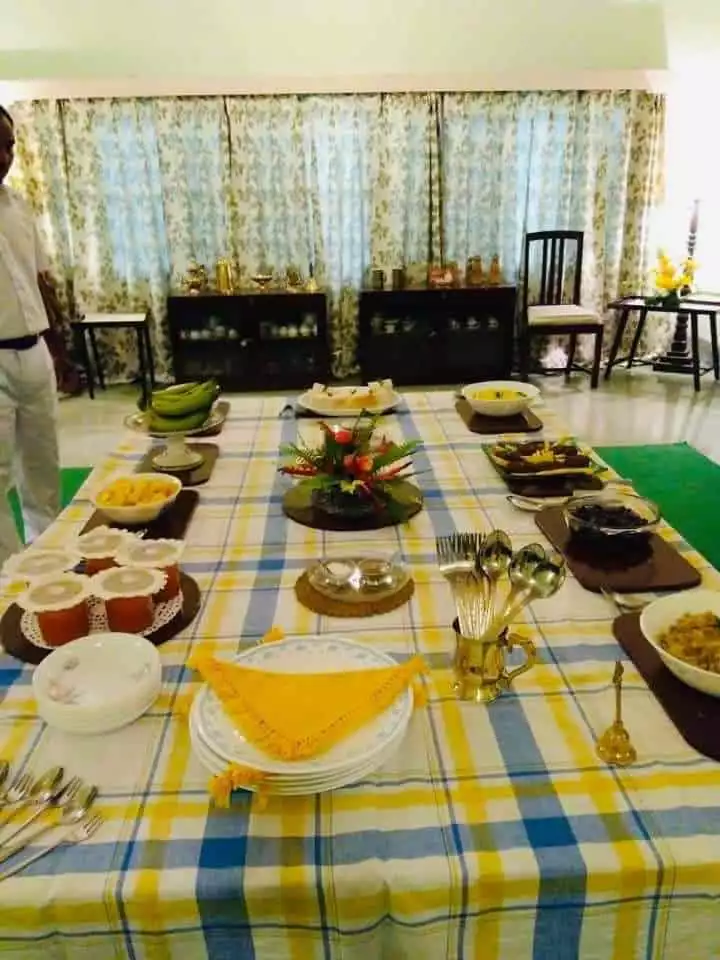
“I had the good fortune to experience the last of this culture and am blessed that my path crossed with old ‘Baboorchi’, probably the last of the Mog cooks, who not only fed us some extraordinary dishes but shared his knowledge too. Today, when I look back and I wonder at his culinary excellence, something that I had taken for granted back then. He literally pushed me into writing down his recipes, all measurements in ounces and pounds, muttering he wouldn’t be around for ever. All his knowledge and expertise went away with him; his own son chose to be a tailor in the estate rather than being a cook. I like to think that his legacy lives on now through my love for cooking.” – Kashmiri Nath.
She is a chef & food consultant and blogger from Assam. She has promoted and has transformed Assamese Cuisine, served it in fine dining restaurants across India. She has served dignitaries and celebrities, and worked with the Assam Tourism on numerous occasions. She regularly contributes to food journals and is a jury member at Guwahati Food Awards. She has written the article for Curtain Call Adventures and photos used are her own and those of Tanu Mishra.
Kashmiri has graciously shared a recipe for Shepherd’s pie that she learnt from her old cook. A traditional British dish that was replicated with ease by the cooks in the tea estates.
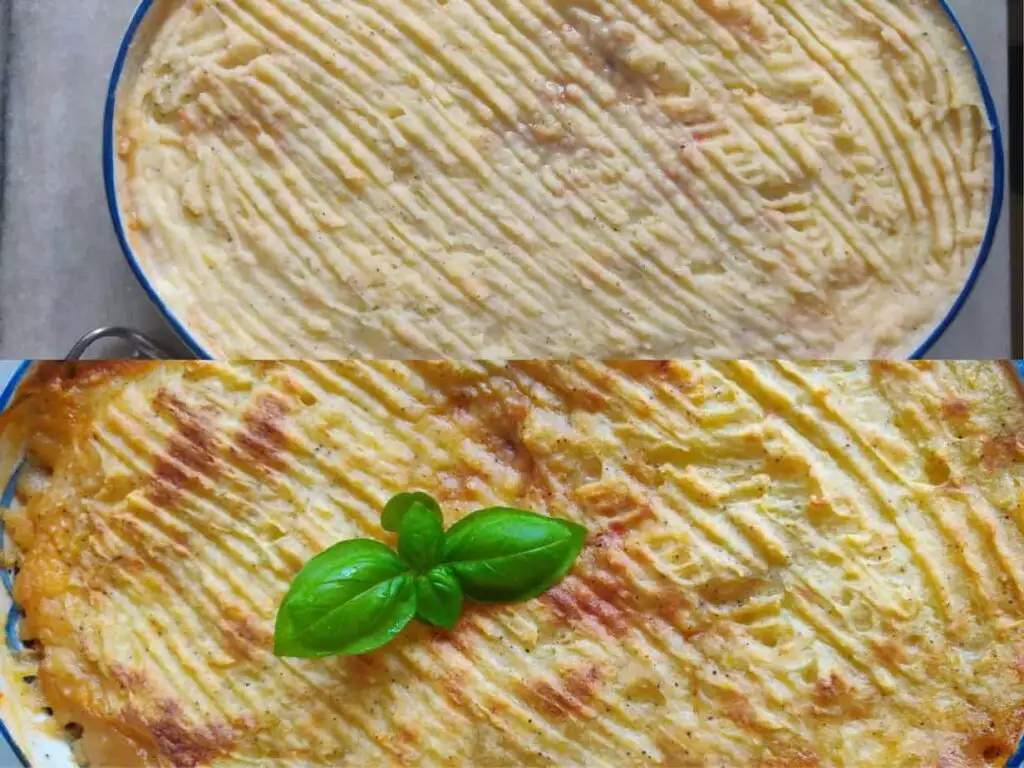
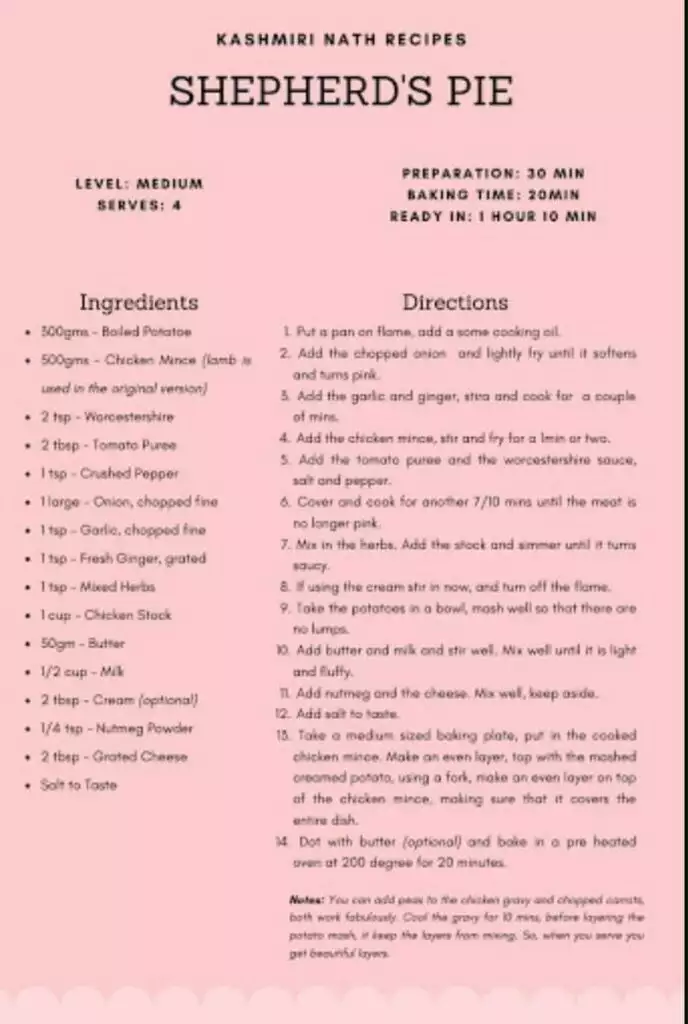
“I grew up in the small picturesque industrial town of Digboi in upper Assam which is the birthplace of the oil industry in Asia. I had this knack for drawing and painting from early childhood. I used to amuse my uncle and his friends who were budding engineers with my accurate drawings and ability to identify cars. I must’ve been about 5 years old. He had asked me to draw a passing car . I managed to draw the car – a Fiat including the dog in the window. I of course remember nothing of this- but my late uncle used to relate this story”.
The delightful paintings are done by Dr Sanjeev Handique, Director of Radiology and Imaging GNRC Hospital, Guwahati. We asked him about how he got started in watercolours and his hobbies.
“I used to try and do paintings in oil in my earlier attempts at art. But since I first dabbled in watercolour about 20 odd years ago, I have found the medium most creatively beautiful and challenging . Some of these early watercolour paintings were portraits and obviously not very good”.
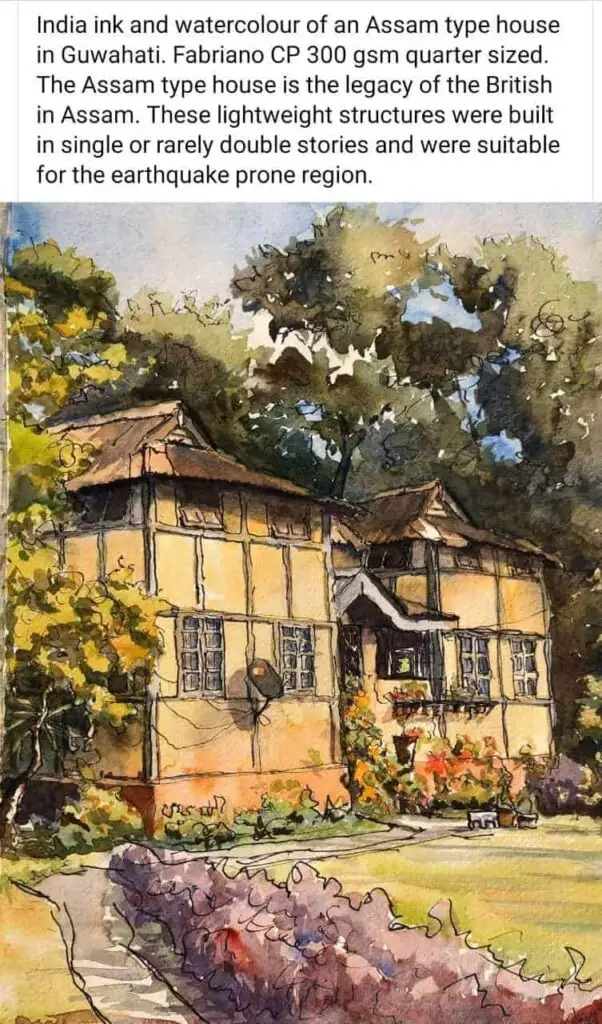
“Due to a hectic professional and family life, I couldn’t find time to indulge in my interest sincerely till very recently. A few years ago my wife had a medical condition for which we had to visit Mumbai for her treatment. It was in Mumbai, tucked away in a corner of the Four Bungalows area, I found an art shop that was well stocked. That was the beginning of a resurgence in my interest in watercolour painting. Guwahati and Assam, it’s denizens and architecture provide ample inspiration for me as subjects to paint. I try to depict them by watercolour and sometimes using an alternative technique by pen and watercolour.
The recent pandemic has made us all realise that the most essential things in life are the ones we never thought twice about. It has given me added time – as I’m sure it has to all of us to indulge in my hobbies and passions. I’ve always been a passionate cyclist – cycling for leisure, exercise, touring and commuting. This has decreased somewhat from pre lockdown times but I still find time to do short rides. My other passion which has been gardening has also been given a new boost during this time. All throughout the last couple of years or so when times have not been so rosy for us as a family, my wife and two children have given me stood by me. My wife Mitali, despite being ill herself has encouraged me to pursue my hobbies of painting, gardening and cycling at all times.
My message to my radiologist friends would be that pursue a hobby. In today’s circumstances it can work wonders as stress busters and give a sense of fulfilment and joy“.
For more paintings by Dr. Sanjeev log on to – https://www.facebook.com/sanjeev.handique
For more recipes and food images by Kashmiri log on Instagram – @kashmirinath


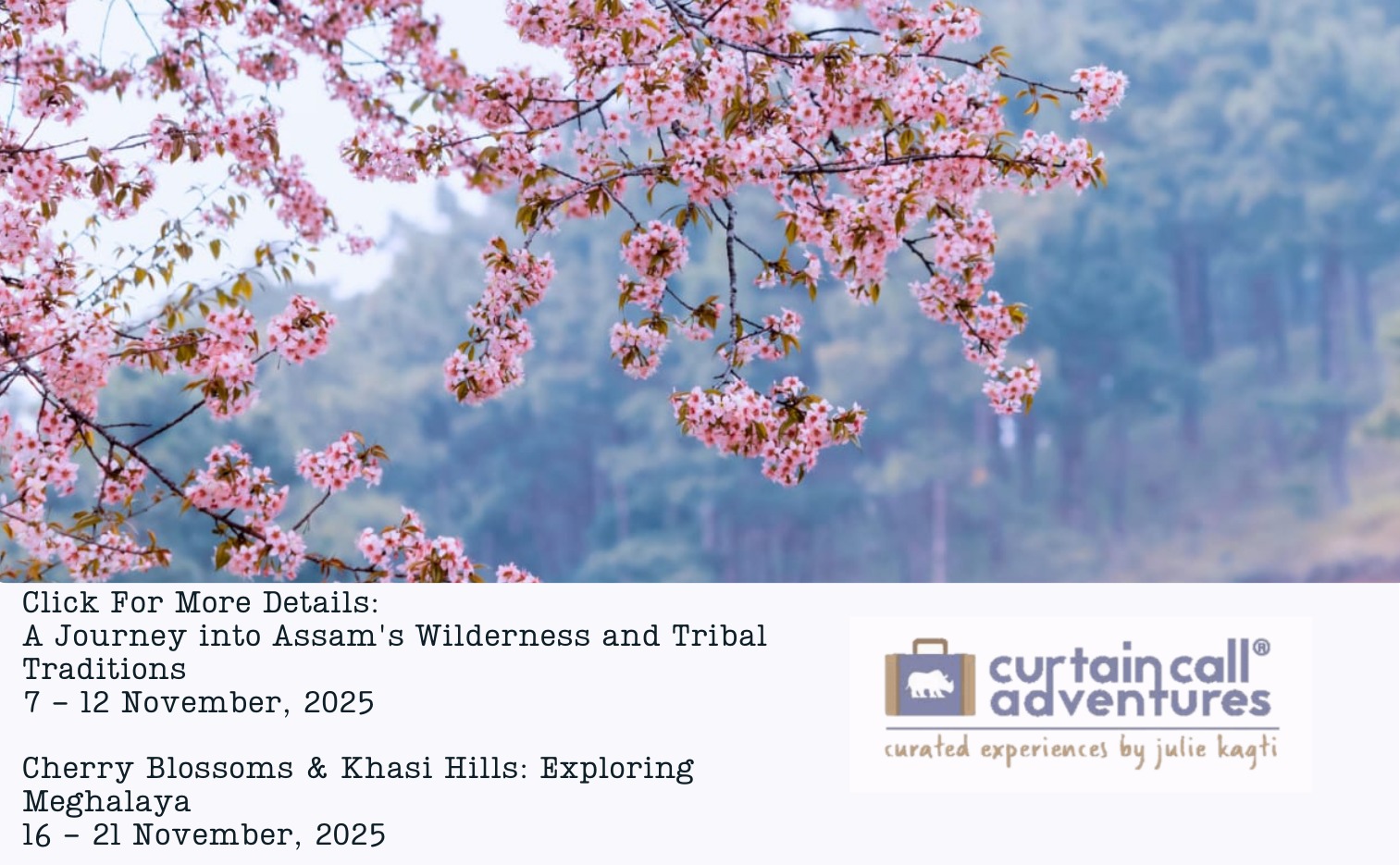
86 Responses
I lived in Assam a, Meghalaya and Arunachal from 1976-1978.Studied in Loreto Shillong.Have such fond memories .Dad was in the IAS so he was posted there Enjoyed those years and still remember our short but delightful stay.
Hi Sujata, i studied in Loreto too but joined only in the 5th standard. thank you for your lovely feedback.
Thank you for this beautiful article and recap of the tea life that remember as a teenage both on north and south bank My father was Denis Ram and we last lived in Harmutty. Beautiful memories Namrata
Dear Namrata,
Thank you for your feedback.
Julie
Lovely write up and paintings! Brought back beautiful memories of my days spent in the tea estates of Upper Assam.I still remember the healthy lifestyle,those lavish bungalows,the clubs the parties,flower shows,and those wonderful Christmas parties we always looked forward to at the club.Digboi was fun to visit for a quick Chinese meal and a film to catch thereafter..Thank you Julie for bringing back such happy memories!
Thanks for sharing the post. Enjoyable read with beautiful paintings. Bringing back happy memories of our years in “Tea”
yes this one is from the memory lane
How to visit here? Any bookings available?
What a beautiful write up. Out bought back tonnes of memories of the Chai Bagan.
thanks
Ricky – Kashmiri
You have made me so nostalgic – you have captured the essence of tea life brilliantly.
Though I must say it has evoked a poignant sadness of an era gone by.
The history of tea in Assam was very interesting to me since I had no idea.
Thank you so much for revoking these memories and taking me back in time.
thanks again
Ricky – Kashmiri
You have made me so nostalgic – you have captured the essence of tea life brilliantly.
Though I must say it has evoked a poignant sadness of an era gone by.
The history of tea in Assam was very interesting to me since I had no idea.
Thank you so much for revoking these memories and taking me back in time.
Thank you. i will share your message with them
What a wonderful read . I can almost feel myself sitting there …enjoying myself thoroughly surrounded by genteel company and delicious food …… Thank you so much ?
Thank you for your comment. It really is lovely to get a positive feedback.
I grew up in the lush green tea gardens in upper Assam amidst fresh air and quiet splendour.
My dear father late Tarun Ch Bardalai was a renound and a senior planter in the Jorehaut Tea Co Ltd.
I can relate to every thing here…..the bunglows,tea time,club tea and everything else.
Its beautiful n wonderfully done.
Thank you !!!
Thank you.I grew up in Digboi and this article is special to me too. Working on a post on tea garden bungalow.
This article depicts all that I grew up with being born & brought up in the lush tea gardens of Assam.
These descriptions represent everything that I cherish the most.
We had the good fortune of having a Mog bawarchi ,who shared his recipes with my mom.
All in all ,I was transported back in time,being a planter’s daughter,and a planter’s wife too.
Thank you for sharing this wonderful article.
love your comment. which garden are you based in?
My Anil Chand was in the Tea Gardens and I spent most of my school holidays there. Wonderful memories. As a teenager I got to assist in the hospital there too. Never will forget my experiences, the food, the people.
Beautiful paintings
thank you
They enjoyed life in the best possible way .
Incidentally I landed in Shillong in the year 1979 after my Masters to pursue my research career
yes they really maintained their work – life balance and made the most of life. Shillong must have been lovely in 1979
Superb Julie??? you have done fantastically!!!!You will be an inspiration for so many other. Very proud to have been part of your childhood growing years..?congrats keep up the good work
Thanks Anita. You are too kind, warm regards
Hi Kashmiri…very very interesting article..I too have found memories of North East especially Meghalaya as my mother is a Khasi and every we would visit Bihar for 10 days and Meghalaya for a month every summer holidays…I grew up in Chennai ..good old Madras those days…must try your receipe of Shepard’s pie…all the best to you
Thank you. We will pass on your message to Kashmiri. Regards
Terrific article, Julie. As one who spent the first twenty years of his life in Digboi I relate to everything that is written. All the more, as Sanjeev and the Nath’s are well known to me from childhood.
Pure nostalgia. Thanks!!
Thank you
Hey Rashmi, thank you for your words of appreciation. Writing this article was cathartic, tripping down memory lane. When Julie requested me to write a piece on the culinary history of the tea plantations, the thoughts came out like a deluge. Glad you enjoyed reading through.
This made me so nostalgic!! Such a wonderful write up. I grew up in Jorhat in a tea family, surrounded by extended families, who were all tea planters.Your article made me long for those beautiful days, thank you!
Thank you for your comment.
Beautifully written article really enjoyed reading, reminded me of Barua cook I had in Borsapori who would come up with wonderful dishes, during the bachelors party I use to hold for the district. Wish I took interest when he use to teach me how to prepare. Thank you once again for taking me back to those wonderful time.
Thank you for your comment. Those bachelor parties must have been lots of fun.
A fantastic write up . Brings home good old memories from Digboi where I have started my professional life and continued for 25 years . Tea gardens are very close to my heart being born in a Planter’s family .
Thank you.yes this article is nostalgic for so many of us
This was such a lovely read, Julie Ba. It left me feeling nostalgic and very hungry as well. 🙂
hey thanks. yes this article is nostalgic for so many of us
Lovely article Julie and the water colours superb. Brought back so many fond memories. On route to Shillong for my summer vacations, my brothers and I spent many wondrous days with my various uncles on the plantations and the clubs.
Even have memories of dropping and collecting my cousin to school at the Dibgoi refinery and the sight of the eternal fire was a treat as were the weekly trips to Tinsukia for special items!
The photo of the planters house shown here …. Is that the managers residence at Rajmai TE. The layout looks exactly the same with the porch and the guest rooms along the verandah to the right.
My mother picked up many of the Mog bawarchi receipes which she than passed on to our cook… the aloo chops, sheperds pie, egg sandwiches, cutlets …. so those continue to grace our dining table on a weekly basis.
Thanks for this.
Thank you for sharing your memories too. do you have a copy of those recipes? regards
Julie
It was wonderful reading about life in the tea gardens in those days,had lots of relations working in tea in different companies, remember having a great time whenever we visited them, and the lovely food prepared by the Mog cooks.We were in Tocklai so indirectly related to tea industry.How I miss those lovely days.thanks for sharing and bringing back wonderful memories.
Thanks for sharing too. yes Tocklai is related to tea and I am glad you liked the article.
My wife, Jackie Lane (nee O’Leary) was born in Digboi, and educated at St Agnes Convent, Haflong, and Little Flower School, Dibrugarh. Most of her siblings, and father worked for the Assam Oil Company in Digboi or OIL in Duliajan or Moran. I was born in Bombay, and a son of a tea planter who had been in tea from 1938 to 1967. I left India in 1948 but then returned to Assam from the UK and was an engineer servicing the engines in the tea factories until late 1968.
Thank you for sharing. Growing up in Digboi I remember the O’learys. regards Julie
My wife Jackie had tried to reply to you this morning but for some reason her reply did not transmit. I will see if she can try again.
Jackie mentioned that she does not recall you in Digboi, but that maybe because she is a bit older than yourself. Perhaps you knew Jackie’s brothers, Patrick, Robert and William.
I remember William as I studied till the 5th standard at Carmel school and he was in school at the same time. Please Ask Jackie to write to me at – [email protected]
Hi Julie – The William O’Leary that you knew is the son of Jackie’s brother William now living in Perth, Australia. William (senior) was a chemist in the Assam Oil Company Laboratories in Digboi. The Jackie you knew is the daughter of Alec and Olga Morris. Olga Morris is one of my wife’s sisters also living in Perth. Her husband Alec was employed by Oil India in Duliajan, and then emigrated to Australia.
Thank you Alan for the clarification. please give my regards to William if you are in touch with him. The similarity in the names confused me. take care.
A superb write-up. We never got this background info years ago.
THANK YOU
Wat a lovely write up which is scripted so beautifully. The charm of tea is still there but the intensity is diminishing slowly & also old dastur seems to be fading away . Such write up evokes nostalgic flavour of bygone days
THANK YOU
Couldn’t have been a better way to portray the old world charm of the tea plantations! Felt nostalgic as I navigated through the beautifully curated lanes of your article .. it was like going back to that time ! We had spent 10 years in
Doomdooma amidst the lush greenery! Thanks so much for letting us relive those precious memories!
thank you Mitali
Couldn’t have been a better way to portray the old world charm of the tea plantations! Felt nostalgic as I navigated through the beautifully curated lanes of your article .. it was like going back to that time ! We had spent 10 years in
Doomdooma amidst the lush greenery! Thanks so much for letting us relive those precious memories!
Congratulations – a great read and a wonderful memory jog . We were in Assam 1966 to 1972 having served at Dufflaghur (North Bank), Behora, Bordubi and Moabund estates before my transfer to Darjeeling. I was given the task of modernising Rajmai, Behora and Romai Tea Estate factories in 1972/73. Your tea life descriptions depict an unforgettable era in our lives – so accurately and vividly portrayed.
Those cooks were truly miracle workers some of whom were forgiven for occasionally dipping into the Saheb’s booze cabinet !
Delightful write up that brings back fond memories of Planters’ life style of an era gone by We recall with Nostalgia all the escapades in Dhunseri Club. S K and Gill were always the life of every get together especially the crazy bungalow parties ( live band in attendance along with “ Black Panther “ ) We are settled in Chicago , post retirement from Tea in 2003 ( Last garden was Phulbari ) It would to nice to connect up with some of the “ old timers “ like S K Sharma through your post Dinesh and Vinita Prakash
Congratulations – a great read and a wonderful memory jog . We were in Assam 1966 to 1972 having served at Dufflaghur (North Bank), Behora, Bordubi and Moabund estates before my transfer to Darjeeling. I was given the task of modernising Rajmai, Behora and Romai Tea Estate factories in 1972/73. Your tea life descriptions depict an unforgettable era in our lives – so accurately and vividly portrayed.
Those cooks were truly miracle workers some of whom were forgiven for occasionally dipping into the Saheb’s booze cabinet !
Dig boy Dig boy, Dig boy.
everytime conjures up such fond memories of one visit I made as an apprentice summer trainee Market Researcher. And man, did I unearth any good usefull find? 3 charming Assamese girls all in the AOC office and the bungalow of the Big Boss. One of them had the Sweetest full red pouty lips I had ever seen. I said, I had ever seen :). And the roast pork at dinner ????? Both juicy that still leaves a sweet taste in the mouth.
Great read. Mesmerising paintings. You make Plat hair fashionable. If natural, let them be Assam, the naturelle. See the artist in you. Keep rolling.
Or may be, it’s my mind that readily accepts Assam, I still do not know, but am enchanted. Let it be and remain that way.
thank you for your comment
Wonderful read Julie, brought back memories of the 33 years spent on the estates in Assam,thank you.
I see Saroj Sharma,S.K. as we knew him has also commented – he is an old friend but have lost contact with him. Any idea if he could be contacted?
Thanks again.
Thank you Danny. the email id for Saroj Sharma – [email protected]
Such a lovely nostalgic trip down memory lane. Having been born and brought up in the estates, can relate so well to it. We too had a magh cook and still remember his use of English words his way to explain a recipe. Thank you for the journey back.
Runa
Thanks. Yes tea garden life was so special. I miss the food.
Julie
Loved reading the article, brought back lovely memories of the time spent in the tea gardens as a child. Thanks
Thank you for your feedback. yes tea gardens as a child was fantastic for me too.
julie
A beautiful portrayal of life in Tea, bringing back memories of our “Mog” cook and my Mothers instructions. I was a baby in Tea from 1945, through my years growing up and eventually working in tea … the brilliant descriptions of club nights, Christmas .. Thank you fir this.
Hi Julie, BTW, are u the late Manju Kagtis daughter ? We were in Bogapani and Margherita from 1980-1987. Digboi was a regularly visited town , as I was a member of Digboi Club too. Wonderful memories of Tea, thank you for the article. Brought back great memories.
A wonderful story about the exceptional quality of life in the Tea Plantations of Assam ; which remained unknown to those who lived in the India west of Calcutta ! The Maug Cooks were a legend no doubt but the most memorable are the sense of comraderie and friendship that was the focus of the social life in the planting communities , centered around the club and their “DO S” . A gala like atmosphere when the ladies and their MAUGs became in charge to put out magnificent feasts !!
Assam’s Tea Life surmises the saying
“ Gar Ba Firdaus Zamin Ast : Hamin Ast Hamin AST”
The Moghul emperor Jehangir’s inscription on ShalimarGardens in Kashmir !
A wonderful write up of tea life and the birth of tea. My husband and I have been associated with tea since 1981….much later than everyone who has written so far! Our gardens are on the other side of political divide of Bengal after Partition but the life experienced, though later on down the line, was still full of dasturs, food and cooking style inherited from the British Raj, and a lordly lifestyle unique to the tea gardens.
My children grew up, spending every holiday they got, in the gardens and they loved every moment!
We did inherit a ‘Barua’ cook but sadly he did not stay long as by that time quite a few of them were emigrating. Thankfully he had taught the ‘paniwalas’ and we enjoyed quite a few of the recipes left behind by the British memsahibs including the shepherds pie!
As I read the article, feeling nostalgic. Yes in today’s scenario we are missing those days. Recalling my childhood memories.
Excellent stories of tea garden specially the involvements of tea garden Mem Sahab.. Spent in Assam tea gardens such as Koomber, Coombergram, Urrunabund, Larsingha , Bamgoan & Sonabheel & then in H.O from 1962 to 2004 & enjoyed my tea life fully. Now reading your article I felt I have been rejuvenated. Excellent write up. My regards & thanks.
I grew up in Lower Assam (Mangaldai P&G Club) in the 1960s and 1970s very much in the culture you describe. My father was one of the early Indian planters so we experienced the full transition from Scottish to the Indian! It was a wonderful multi-cultural mix. I have visited Scotland often in past years to keep up with the folks I considered family growing up. I am so glad I was able to fully experience a wonderful lifestyle that unfortunately is mostly gone – I visited again in 2009 after many years – and the ambiance felt very different – the cuisine had changed significantly – more aloo-puri than cucumber sandwiches!! Thanks for the wonderful article and illustrations – bought back fond memories.
Thanks for this article. My grandfather and uncle were with Assam Oil and loved in Digboi. In fact my grandfather was chief engineer in British times. And uncle was there till the 70s when he migrated to Australia.
And then, my aunt was married into tea – and loved all of her life in Jardine and Henderson Tea Estate.
Brings back mementoes of my childhood….
Hi Julie
My sister Mimi and I stayed in ledo and studied briefly at Carmel
your mother hand painted a beautiful saree for my trousseau
-lovely memories and i too have had my knuckles rapped by a Mog kitchen wizard !!
Hi, Ms. Julie, thanks very much for this article. Our Deshmukh family members are all very attached to Digboi. Three of us were born there. I started off in Little Flower School before moving on to Calcutta. My father B.K.Deshmukh worked all his life in Assam Oil, retiring as the Refinery Manager. We lived in a number of bungalows there, as shown in your paintings, the last being in Shillong Para, opposite the golf course. We were members of all the clubs, Digboi Club, India Club, Sports club, etc. Visits to nearby tea gardens in Margherita and Doom Dooma were highlights as well as the Sunday haat on the road to Tinsukia. Thanks once again for taking us back to a small corner of paradise. Would love to be in touch through mail or whatsapp.
I spent my St. Edmunds school holidays in my Dad’s tea garden in Assam before and during the WWII years. For me, life in a tea garden in Assam was next to being in Paradise. Those tea garden cook certainly provided us with some of the most delicious foods, British and lndian, served in Downton Abby style.
Lovely write up! Took me down memory lane. Had the privilege of being born and brought up in the gardens. And also having a Mog Barwarchi’s meticulously prepared spreads served by Bearers donning pagris on well layed out tables. I remember my mother telling me….. that when she first came as a newly wedded memsaab, our Mog Bawarchi prepared a flaming pudding and he presented it by switching off the lights!! The blue flames on the pudding was a sight to see.
Lovely write up and paintings.Brought back beautiful memories of my days spent in the tea estates of Upper Assam..I still remember the healthy life style the lavish bungalows, club life ,the parties,flower shows, sports and the wonderful Christmas parties at the club we always looked forward to!Digboi was fun to visit for a Chinese meal and a film to catch there after.Thank you Julie for bringing back such happy memories!
For most of us, the foods we enjoyed in our childhood and remembering their taste and smells is part of that nostalgic journey.
Thank you for sharing this wonderful article and the fabulous artwork by Dr Sanjeev Handique and the photos. Looking forward to reading more of your write ups.
An excellent, evocative read Julie. Thank you for taking us on this nostalgic and beautiful journey.
What a lovely article….enjoyed reading it and the paintings are out of d world. It brings back memories of good times.
Also Moonmoon, congratulations on d great work that you’re doing during Covid times. All d best.
Hi Julie…what a beautiful way to pen down all the thoughts about life in a tea garden! It is rightly said, ‘ Live life kingsize’! This is your life in a tea garden. Being born in Tezpur, had been to many tea gardens, finally married a tea planter…and boy! The best years of my life!! Sankos, Amgoorie, Koomber, Borpatra, Nonaipara were all amazing! Thank you for bringing back these memories.
What a lovely read for those of us who were born in Assam and spent our childhood there. Dad worked at Assam Oil Digboi and all four of us siblings were born there . A magical childhood . Sunny boy was the famed Mog cook of Digboi . Till the early 70s one could order 6 months before Christmas toys like rocking horses and Dollhouses from England . And those Scottish planter accents ..The sunsets at 4 pm , the torrential rain , the pitch blackness of the still nights punctuated by the howls and roars of many prowling beasts , the clarity of the constellations in the nightsky .. the hint of mystery everywhere:such an onrush of memories . Thank you . A big hand to the passion you have for your roots and to the gifted Dr Sanjiv Handique ( Ricky da ) and Kashmiri Nath ( Kash ) who have created a bridge to a past that is now gone .